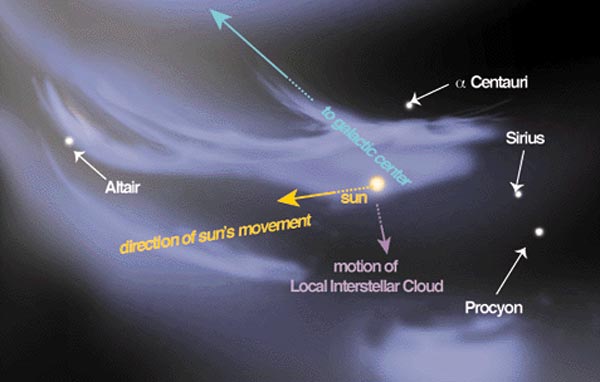The Local Interstellar Cloud

Explanation:
The stars are not alone.
In the disk of our
Milky Way Galaxy
about 10 percent of visible matter is in
the form of gas, called the
interstellar medium (ISM).
The ISM is not uniform, and shows
patchiness even near our
Sun.
It can be quite difficult to detect the
local ISM because it is so tenuous and emits so little light.
This mostly
hydrogen gas, however, absorbs some very
specific colors that can be detected in the light of the
nearest stars.
A working map of the local
ISM within 10 light-years
based on recent observations is
shown above.
These observations show that our Sun is moving through a
Local Interstellar Cloud as this cloud flows outwards from the
Scorpius-Centaurus Association star forming region.
Our Sun may exit the
Local Interstellar Cloud during the next 10,000 years.
Much remains unknown about the local
ISM, including details of its distribution,
its origin, and how it affects the Sun and the Earth.
Authors & editors:
Robert Nemiroff
(MTU) &
Jerry Bonnell
(USRA)
NASA Web Site Statements, Warnings,
and Disclaimers
NASA Official: Jay Norris.
Specific
rights apply.
A service of:
LHEA at
NASA /
GSFC
& Michigan Tech. U.

